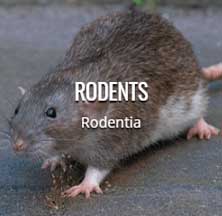What is a Mice?
Mice are mammals that frequent our outdoor and indoor spaces. Mice have learned over the years that their homes are more than enough to provide for their basic needs. This makes it difficult to avoid these pests!
As all rodents have, mice also have front incisors that grow in their top and bottom jaws throughout their lives. Mice gnaw on things to keep their teeth from growing too much, which makes them a pest in our gardens and homes.
Northern Virginia is home to a variety of mice species, including white-footed and deer mice.
Are all mice potentially dangerous?
Mice are known for creating problems in any area they inhabit, be it the city or the suburbs.
Mice are very active and have high metabolisms. They are constantly looking for food. Mice eat plants, lawns, landscaping plants and crops.
Mice’s constant chewing can cause damage to wires, pipes and cables, insulation, floors and other electrical equipment.
There are health risks everywhere there are mice. They transmit bacteria and other diseases to people through their saliva and excreta. They can spread diseases such as salmonellosis and hantavirus through the house. Their shed fur and feces can cause asthma attacks and allergies in people who are susceptible.
Mice are prolific breeders and can quickly overtake any area they find food or shelter. Mice can easily find a way to enter our homes in order to escape the colder weather or seek out more food sources. To get in, these pests need only a small space. Once inside, they will move behind walls, beneath floors, and above ceilings in search of food and nesting material.
Common places where mice are found
Mice are an active species all year. They don’t hibernate. They are always looking for shelter from the elements and predators.
The following are some of the most common places for mice to place their dome or ball-shaped nests:
1) Wall voids
2) Behind large appliances and cabinets
3) In the back of cabinets
4) Basements and attics
5) Cardboard boxes
6) Woodpiles
7) Areas with dense vegetation and tall grass
8) Tree hollows, tree stumps

